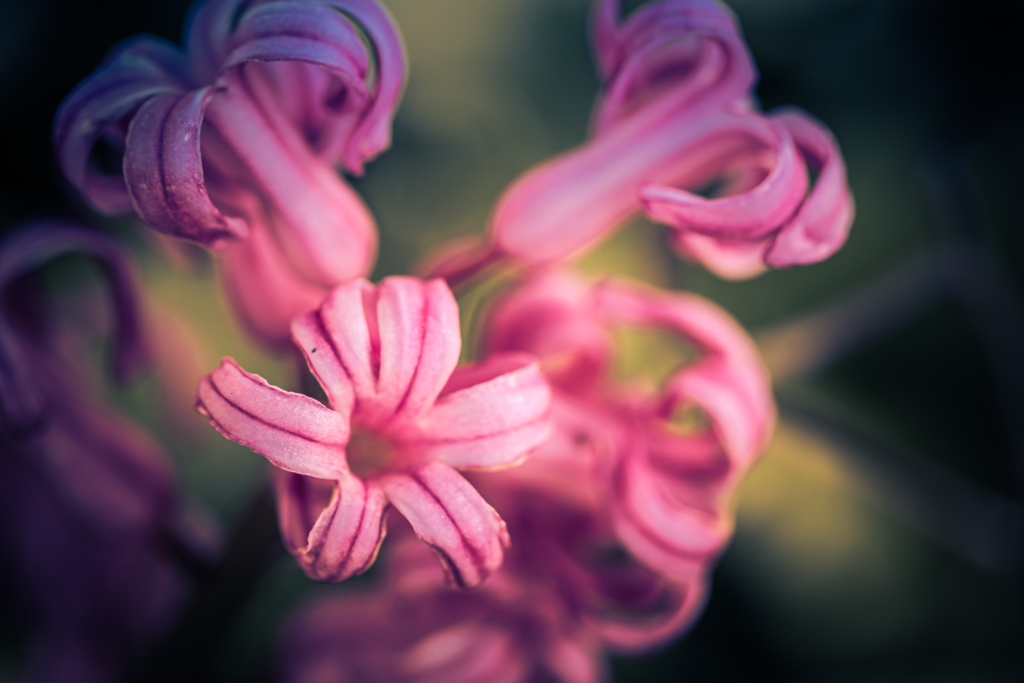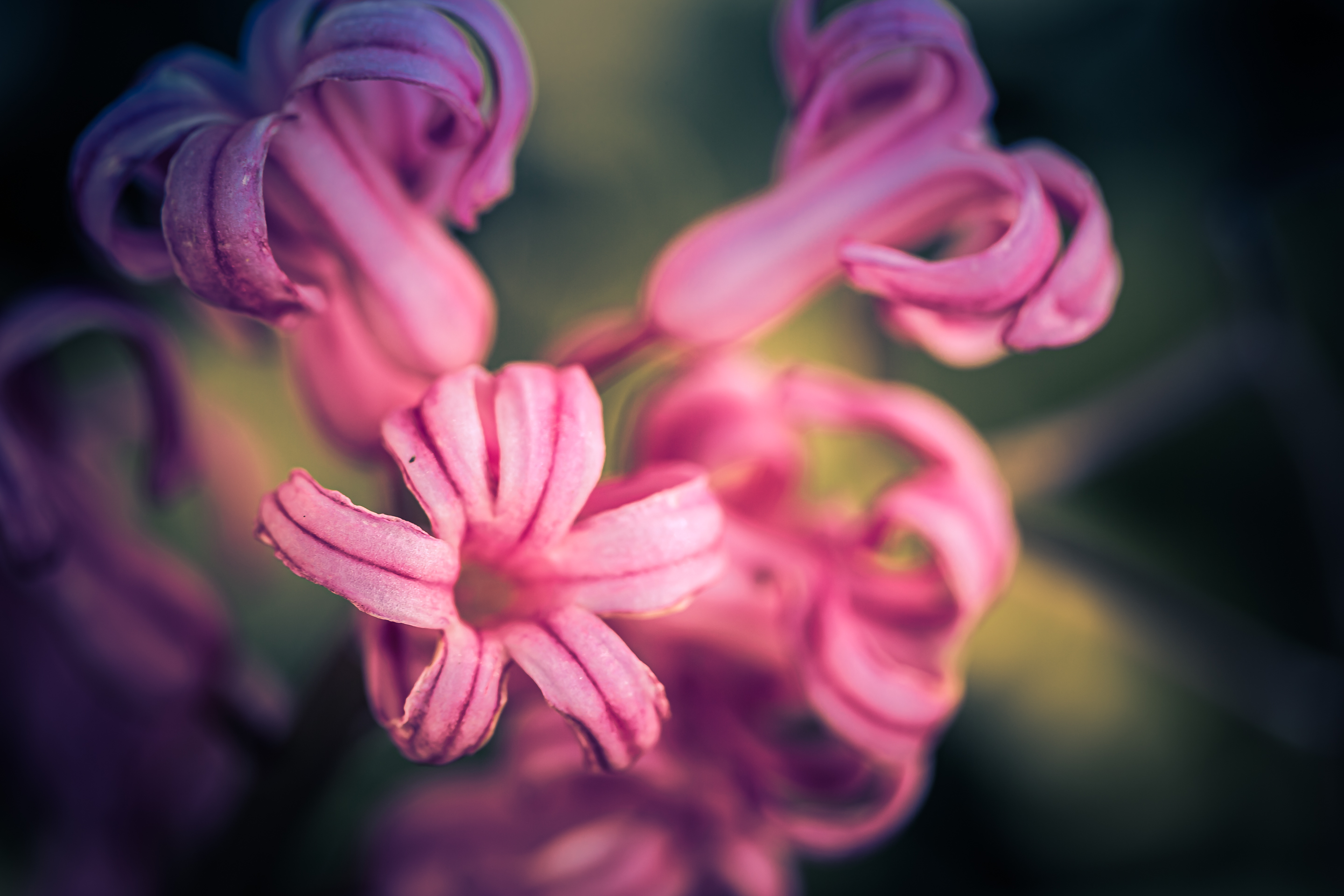
I sourced this one to the people by way of Instagram story poll. A choice between black and white and color. For insight into my own proclivity, I immediately began hammering away a post built around the black and white theme. I did this despite suspecting color would would carry the day. As a humble yet unelected representative of the people I must render unto them that which their votes beseech. So hyacinth in color it is.
Followers of my work may notice my macro photography always features targeted areas of focus. What is a targeted area of focus? Areas of the photo that have sharper focus juxtaposed to the soft blurry areas—referred to as bokeh. By shooting close in on your subject at a large aperture your lens produces a shallow depth of field. Thanks, physics! What is an aperture? Well that’s the diameter of the lens diaphragm that allows light to pass through into your camera and onto your sensor or film. Larger apertures have a bigger opening allowing more light to pass through. The result: a faster speed, shallower depth of field, and softer focus. Great for producing dreamy flower photos. Smaller apertures feature the opposite: slower speed, deeper depth of field, and sharper images. Ideal for producing detailed landscapes with sharpness throughout the image.
Either your camera body or the lens itself features f/stop numbers. The lower the f/stop, f/2 for example, the larger aperture. Whereas f/22 is a very small aperture, something like a pinhole. Understanding this scale and building your feel for aperture and f/stops is essential to effective execution of your creativity. Now get out there and start experimenting with different f/stops. Even the latest smartphones allow you to do this. So next time you go for that banging selfie, lower the f/stop and achieve some of the algorithmically staged blur!
I don’t write much about that how-to of photography, but if you found this helpful let me know and I can work more tutorial type posts into the rotation.
Interested in buying? Purchase
